Endemic species are the species which are found in a defined single geographical region, like a state, nation, country, island or other defined zones.
The endemic species either flora or fauna is native and restricted to a certain place, if find in any other geographical region than it will be not considered as endemic species
Endemic Species Examples
here we list out few endemic species as follows
- Cape sugarbird
- Cytisus
- Clinotarsus curtipes
- Orange breasted sunbird
- Amphipsalta zelandica
- Aplastodiscus arildae
- Devil hole pupfish
- Giant Panda
- Norway Lemming
- Scottish Wildcat
- American Alligator
- Pygmy Three-Toed Sloth
- Poison Dart Frog
- Glacier Bear
- Chiribiquete Emerald
- Sclater’s Monkey
- Patagonian Mara
- Southern Adder
- Sri Lankan Birdwing
- Brookesia Micra
- Wilson’s Bird of Paradise
- Platypus
- Kiwi
- Matschie’s tree kangaroo
- Ilex gardneriana
- Vateria indica
- Hydrophila madurensis
- Hopea parviflora
- Pterocarpus santalinus
- Nepenthes khasiana
Cape sugarbird
Cape sugarbird (Promerops cafer) is the bird or aves species which are endemic to the Fynbos biome of the western cape and Eastern cape of South Africa. It is a grey-brown colored bird that is spotted by presence of yellow spot under the tail and in males, a very long feathers present. Another feature of the Cape sugarbird is its sound while flying. When the male bird beats its wings, due to its main flight feathers arrangement made a sound of frrt-frrt with the intention to attract the female birds
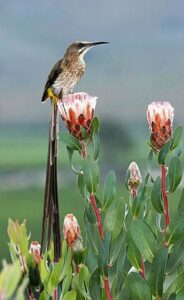
Cytisus
It is the flowering plant inhabits to the open site in Europe, North Africa and Western Asia. It is also known as brooms in several tribes. these are kind of shrubs producing highly fragrant, brightly colored, pea like flower.
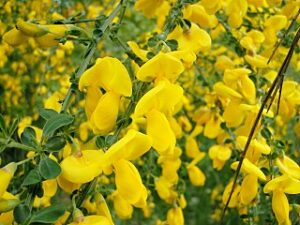
Clinotarsus curtipes
Clinotarsus curtipes also called as “Malabar frog” or “ bicolored frog”. It is endemic to the Western Ghats of India. The species’ tadpoles are black in color , form compact and dense schools in the streams in the forested areas. The frog vomerine teeth are not fully developed, they are two slightly oblique series with the choanae hind edge. It is greyish or brown in color above, with or without blackish dots; edged black; lateral fold lighter; band or a blackish oblique spot below eye; blackish margins with upper lips; throat sometimes dark brown; limbs without bands, dark purplish brown. Male frog having internal subgular vocal sac.

Orange breasted sunbird
The orange breasted sunbird (Anthobaphes violacea) is a small, nector feeding bird that is endemic to the fynbos shrubland biome of Southwestern South Africa. The sunbird is dimorphic sexually as female is olive green in color and males are orange to yellow. Male bird is longer than female.
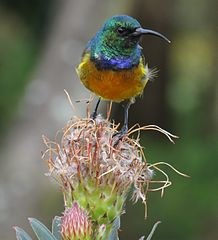
Amphipsalta zelandica
The Amphipsalta zelandica (chorus cicada) is the cicada species endemic to the most areas of New Zealand. They live in forests. They found in area with open bushes where on the trunk and branches, their leftover nymph skins can be seen specially in summer season.
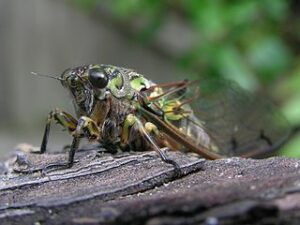
Aplastodiscus arildae
It is the frog spesies belongs to the family Hylidae. It is endemic to Brazil and frogs’ natural habitats are troplical or subtroplical moist lowland rivers and forests.
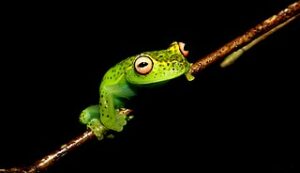
Devil Hole Pupfish
The devil hole pupfish (cyprinodont diabolis) is found only in Devils Hole, a water filled cave in the US state of Nevada. It is small fish with length upto 30mm. male fish are bright metallic blue and female are yellowish in color. Lack of pelvic fins are specific traits of this fish.
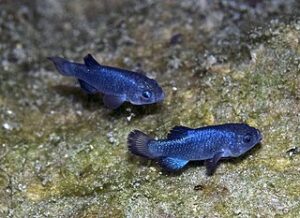
Giant Panda
The giant panda are endemic to the China. They are considered as a national treasure there. Around 1900 giant pandas are alive today on in the wild.
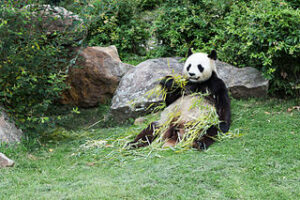
Norway Lemming
Norway lemming are endemic to the Norway. They are also known as Norwegian lemmings.
Scottish Wildcat
Scottish wildcat are endemic to the Scotland. While in Scotland, Scottish cats and dogs drool are very common. At the first look, they look very similar to the house cat but the wildcat have larger brains and different shape of pupil of eyes.
American Alligator
The American alligator are endemic to the Florida of USA.at present they may be thriving but later in past the alligator was endangered and at the point of extinction
Pygmy Three-Toed Sloth
The Pygmy Sloth are the smallest among all kind of Sloths. They are endemic to the Isla Escudo de Veraguas, kind of a small island off the Panama coast. The body length of Pygmy Sloth is between 19 to 21 inches and their weight is 5.5-7..7 pounds only
Poison Dart Frog
These species of frog are endemic to the Costa Rica and South America. They are very colorful but yet very poisonous. The toxicity of poison of Dart Frog vary by the species but some are so poisonous can kill a person. They are very tiny( some are less than one inches),very difficult to spot.
Glacier Bear
The Glacier Bear also called the blue bear. They are endemic to the Alaska, USA. It is the American black bear having silver-blue or gray fur.
Chiribiquete Emerald
This is type of humming bird which is endemic to the Southern Colombia. It is almost fluorescent blue and green color humming bird.
Sclater’s Monkey
This species of monkey is only 11 in number and endemic to the Nigeria. Their most distinct feature is the presence of white tufts of hairs on each ear.
Patagonian Mara
It is endemic to the Argentina. They are herbivore large rodent look like cross between a rabbit and a kangaroo. They are fourth-largest rodent in the world.
Southern Adder
It is the venomous snake endemic to the low-lying coastal areas of the Western Cape. The snake have small horn above each eye.
Sri Lankan Birdwing
It is the species of butterfly endemic to the Sri Lanka only, considered as a national butterfly of the country. Its big wings having bright yellow pops and is the largest butterfly on the island
Brookesia Micra
It is the species of chameleon which is smallest of size only 29mm long. They do change the colors. It is endemic to the Madagascar.
Wilson’s Bird of Paradise
It is the most colorful bird in the world endemic to the Indonasia. The distinct feature is bright blue head and curled tail feathers.
Platypus
The semi-aquatic mammal endemic to the Eastern Australia. This is best known for its duck-like bill. The male platypus are venomous.
kiwi
It is the type of bird which cannot fly with strong kegs but no tail. They are endemic to the New Zealand.
Matschie’s tree kangaroo
It is endemic to the Papua New Guinea. The local people called it as “ ghost of forest”.
Ilex gardneriana
It is critically endangered to the Nilgiri Hills of India

Vateria indica
The Vateria indica ( white dammar) is the plant species endemic to the Western Ghats in India. Habitat loss is the main reason of threatened of species.
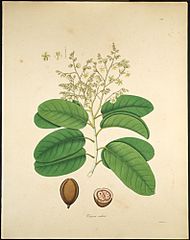
Hydrophila madurensis
It is the species of aquatic plant critically endangered. It is endemic to the Nallakulam in the Alagar Hills of the Eastern Ghats in Tamil Nadu, India
Hopea parviflora
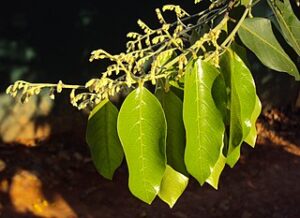
It is the plant species endemic to the India. This tree is timber producing and commonly harvested from the forests.
Pterocarpus santalinus
Tha common name of tree are red sanders, Chenchandanam, red sandalwood, Rakta Chandana, red saunders, Yerra chandanam and saunderswood. The plant species is endemic to the Southern Eastern Ghats range of South India. The tree valued due to its rich red color of wood.
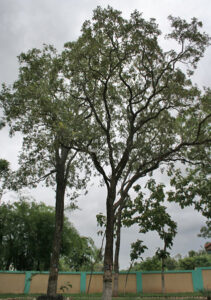
Nepenthes khasiana
It is endemic to the Khasi Hills , India. It is the only pitcher plant species in India. It aatract the prey by the means of blue color fluorescence.
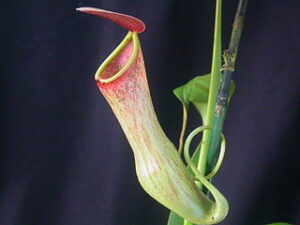
Also Read:
- Does nucleus have chromosomes
- Is helicase an enzyme
- Colon anatomy
- Channel proteins
- Underground stem plants examples
- Is krebs cycle part of photosynthesis
- Chloroplasts in cytoplasm
- Is chloroplast an enzyme
- Examples of endoparasites
- Do prokaryotic cells have cytoplasm
Hi..I am Tanu Rapria, I have completed my Master’s in Biotechnology. I always like to explore new areas in the field of Biotechnology.
Apart from this, I like to read, travel and photography.